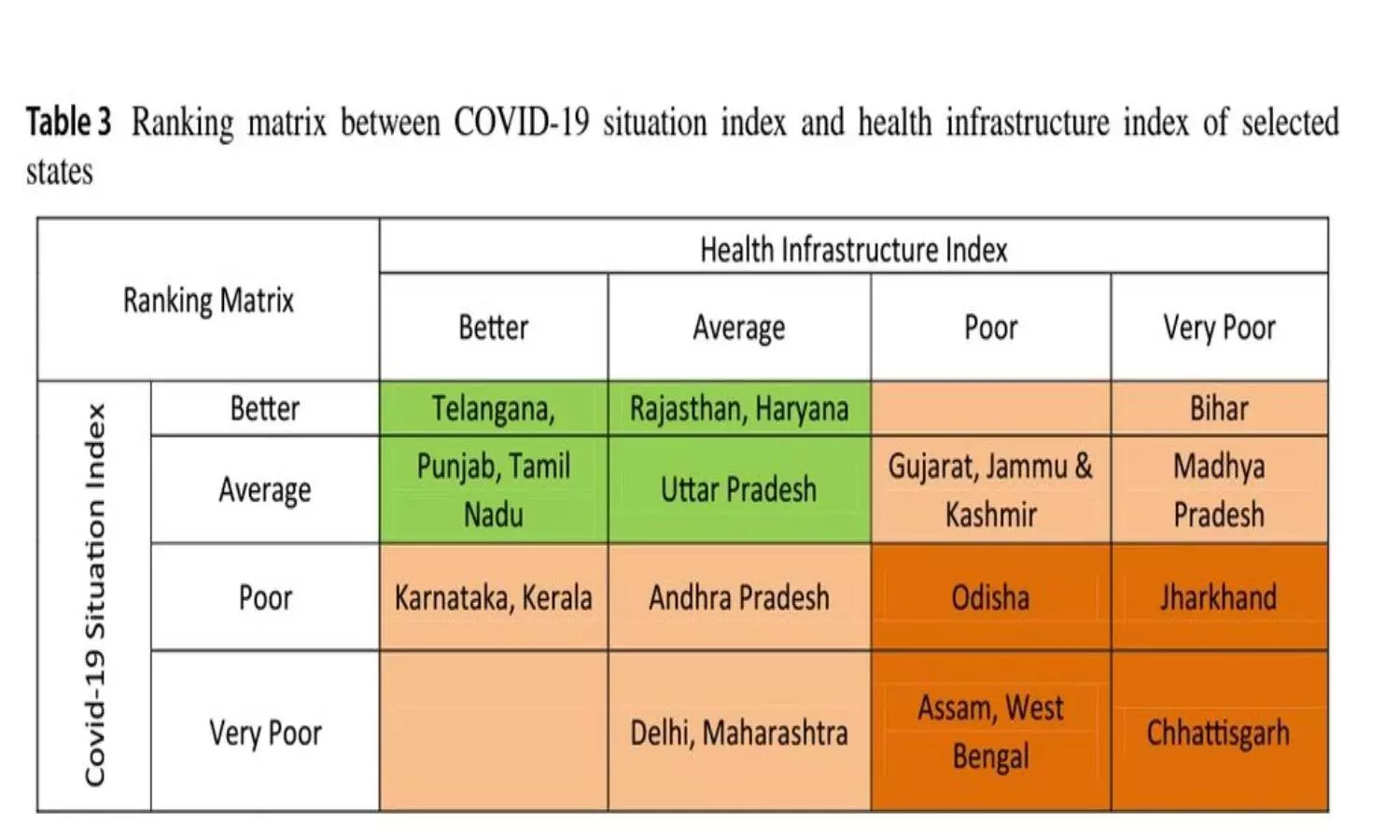Telangana health infra better, well-equipped to deal with COVID: New study
Data cited in the report highlighting state-specific situations related to the treatment of Covid-19 is only till November 1, 2020. Until November 1, 2020, Telangana was the best-performing State in countering the Covid-19 situation
By Newsmeter Network
Hyderabad: A new study has revealed that Telangana's health infrastructure is much better than other states in the country,
Entitled 'Determinants of Covid19 Pandemic in India: An Exploratory Study of Indian States and Districts', the research has been published in the reputed Journal of Social and Economic Development.
According to the study, Telangana has good health facilities to treat Covid patients when compared to Madhya Pradesh, Jharkhand, Chhattisgarh, and Bihar.Researchers calculated the Covid-19 situation index with the help of multiple indicators between March 25, 2020 — the date of imposition of the first lockdown — until November 1, 2020.
Therefore, data cited in the report highlighting state-specific situations related to the treatment of Covid-19 is only till November 1, 2020. Until November 1, 2020, Telangana was the best-performing State in countering the Covid-19 situation, while Delhi, Assam, West Bengal, Chhattisgarh and Maharashtra fared poorly, suggested the report.
Researchers used the growth rate of Covid-19 cases per million population, case fatality rate, recovery rate, the growth rate per million active cases and positivity rate, among other parameters, to conclude the effectiveness of the health infrastructure in all States.
#Telangana Determinants of COVID‐19 pandemic in India: an exploratory study of Indian states and districts. https://t.co/aaJaizwVbF @IPRTelangana @ArogyaTelangana @TelanganaHealth @TelanganaCMO pic.twitter.com/ScUZ5K2pOA
— Dr G Srinivasa Rao (@drgsrao) May 16, 2021
State-level health infrastructure
The health expenditure in India is the lowest among emerging economies. The budget estimates of 2019–2020 show that the expenditure on health in India is only 1.6% of gross domestic product (GDP). However, the available actual estimates of 2017–2018 show that it was only 1.4% of the GDP of India (Economic Survey 2019–2020).
The low investment in health is reflected in the available health infrastructure. There are only 51 hospitals and 1405 beds per million population in India. However, the number of ICU beds and ventilators per million population are 70 and 35, respectively. Despite the increasing number of testing laboratories in different states, India had only 2 testing laboratories per million population as of November 1, 2020. There are 854 doctors per million population in India.
Also, the study showed that there is no robust relationship between the level of health infrastructure and management of COVID-19 at state level as the states with better health infrastructure are also struggling to combat against COVID-19.
A better health infrastructure could manage the COVID-19 cases and prevent death, but it cannot stop the outbreak of infection. It is dependent on other social determinants such as population density and availability of basic amenities such as drinking water and sanitation in households along with demographic factors such as migrant population, elderly population and people with comorbidities.
The results from the present study showed that districts with a higher concentration of COVID-19 infection comprise some of the big metropolitan cities and other major urban centers of India such as Mumbai, Chennai, Delhi, Bengaluru, Gurugram, Nagpur, Kolkata, Hyderabad, Thane, Thiruvananthapuram and Faridabad. Majority of the districts with higher concentration of COVID-19 infection have more than the national average percentage in selected social and demographic determinants such as population density, lack of access to basic amenities, migration, and elderly population.
The study concluded that the SARS‑Cov‑2 thrives among clusters of human beings staying in dense localities with minimum basic amenities, a situation that is further aggravated during health emergencies like COVID due to public health infrastructure. The COVID-19 has exposed the vulnerability of our cities and provided us a chance to 'revisit' the policies and programmes at a local level to make our cities sustainable, healthy, and resilient.